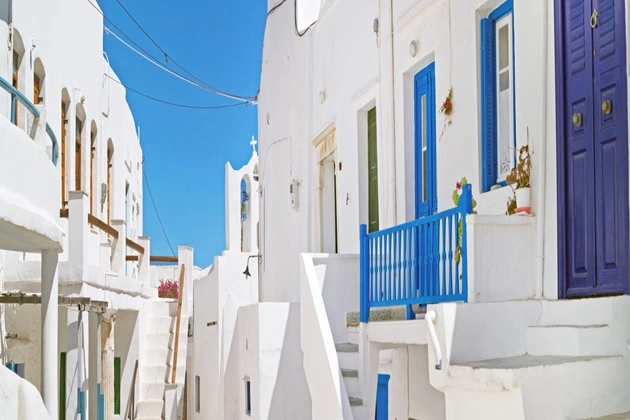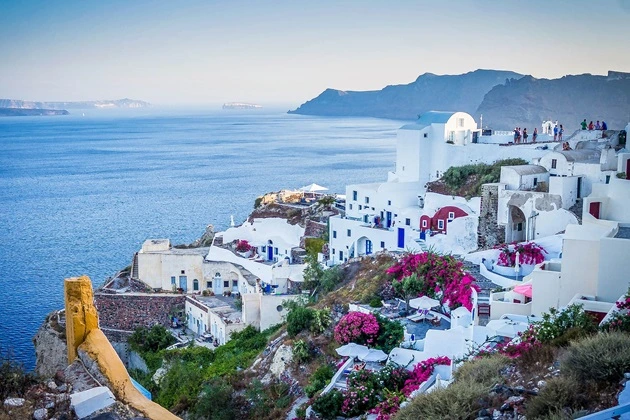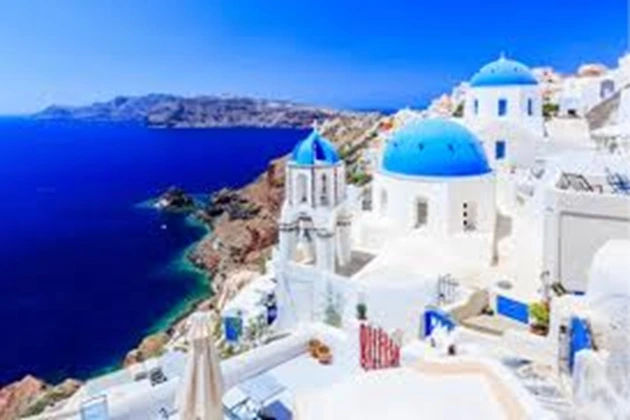Why are Greek island houses all blue and white

The blue and white houses on the Greek islands are a beautiful sight and a phenomenon with deep historical and cultural roots. Few people know what lies behind this stunning color combination and what alternatives exist. There is an explanation for everything, and this color scheme was chosen for a reason.
Cultural heritage and origins of blue and white houses in Greek architecture

The blue and white houses have their roots in the traditional color palette of Greek architecture. Since ancient times, Greek buildings have been painted bright colors like red, yellow, and orange. However, in the 19th century, blue and white became the dominant coloring style.
This style has found its way into the culture of the Greek islands, where blue and white have become symbols of pride and identification. Initially, blue was chosen for painting doors and windows of houses, as it was considered the color of protection from evil spirits and eyes. The white color was used for the walls to reflect the heat and create coolness. This style is still preserved and appreciated on the Greek islands, attracting tourists and inspiring admiration.
Fighting the heat and the epidemic

The blue and white houses on the Greek islands are part of the cultural heritage and have a practical purpose—to help cope with heat and epidemics. The sun’s rays and high temperatures can make houses uninhabitable in the hot Mediterranean climate, so blue and white have been chosen as an effective way to combat these problems.
The white color of the walls reflects the sun’s rays, helping to keep the house cool and prevent it from heating up. Visit. A F R I N I K . C O M. For the full article .It also reflects light, making the rooms brighter and more spacious. The blue color used for doors and windows tends to reflect ultraviolet rays, which helps protect the house from excessive penetration of solar heat. This allows you to maintain a comfortable temperature inside the house, especially during the hot summer months.
In addition, the color blue also has a symbolic meaning regarding epidemic control. In the past, there were many epidemics in Greece, such as cholera. The blue color was believed to scare away evil spirits and protect against diseases. Therefore, painting houses blue also had a practical purpose—to prevent the spread of epidemics.
All these factors combined have made the blue and white houses on the Greek islands not only beautiful and unique but also functional, helping to overcome climate and health problems.
Why are white and blue colors chosen to reflect the sun’s rays?

For several reasons, the white and blue colors were chosen to reflect the sun’s rays. Firstly, the white color reflects most of the visible light, including infrared radiation. This means that white surfaces reflect most solar energy without absorbing it or heating up too much. Using white to paint walls and other surfaces helps keep the house cool on hot days.
The connection of blue and white houses with maritime culture and traditions

Another interesting feature of this style of coloring is the connection of blue and white houses with maritime culture and traditions. Greece, located on the Aegean and Ionian Seas shores, has a rich naval history, and maritime culture plays a vital role in its culture and lifestyle.
The blue color in the blue-and-white houses on the Greek islands symbolizes the sea and the sky. It reflects the beautiful blue waters of the Aegean Sea and harmonizes with the heavenly expanses. The white color, in turn, symbolizes waves, foam, and snow-white sandy beaches. The combination of blue and white colors reflects the beauty and purity of the seascape and creates a unique atmosphere associated with maritime culture and traditions.
In addition, houses, ships, and fishing boats are painted blue and white. This ancient practice helped make ships invisible against the background of the sea surface and ensured safety in navigation.
Possible alternatives and other color options

Although blue and white are the most common colors in Greek architecture, there are other options and alternatives. Some islands, such as Santorini, are known for their houses in red, orange, or pink. These bright hues make the islands even more picturesque and attractive.
In addition, some Greek islands have their unique color schemes. For example, on the island of Mykonos, you can find houses painted in various shades of pink and purple. This creates a vivid and unique appearance of the island.
It is also worth noting that some houses on the Greek islands remain in their original color scheme, ranging from natural shades of stone to bright color combinations. The choice of house color also depends on the preferences and tastes of the house owners and local traditions.




